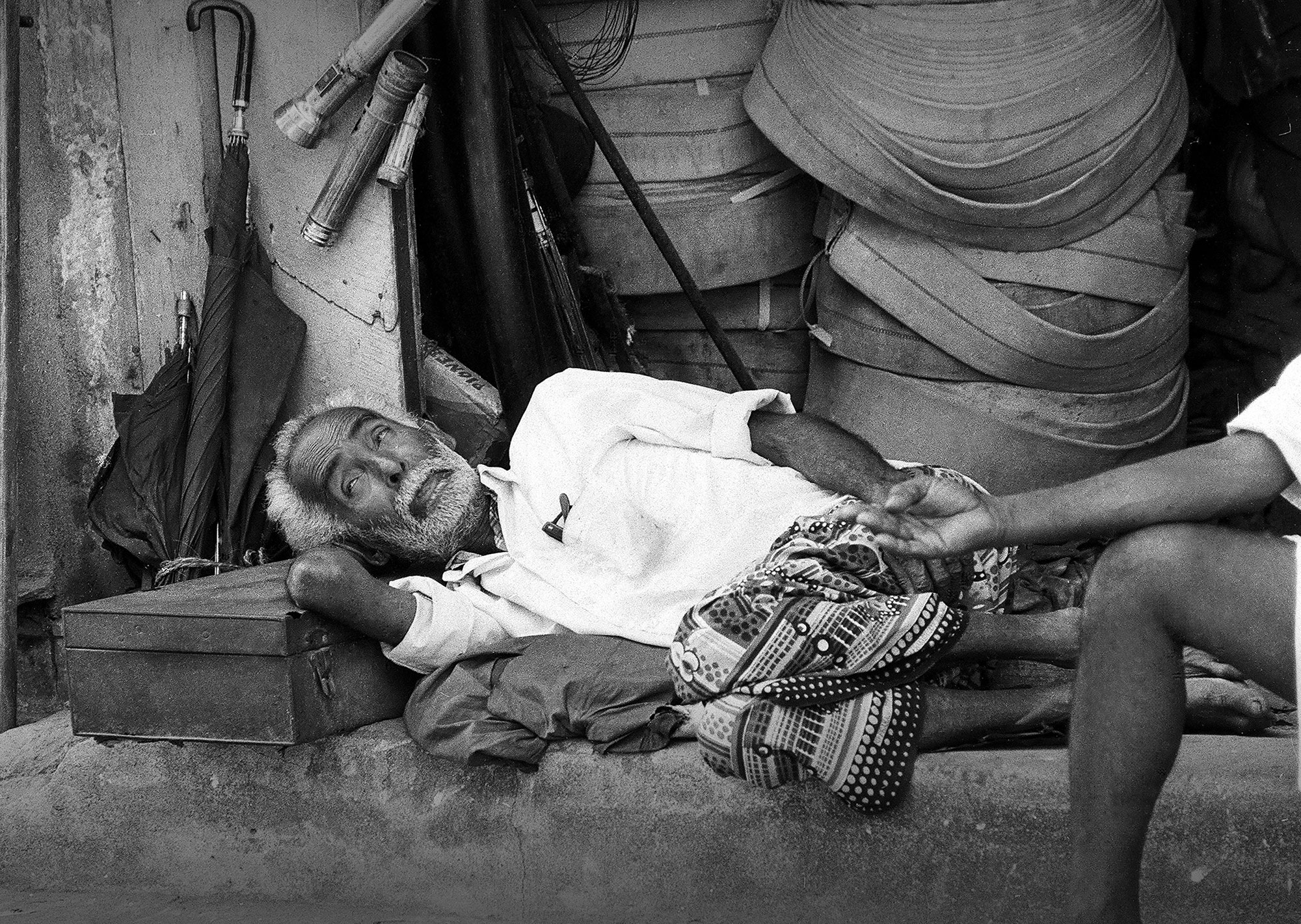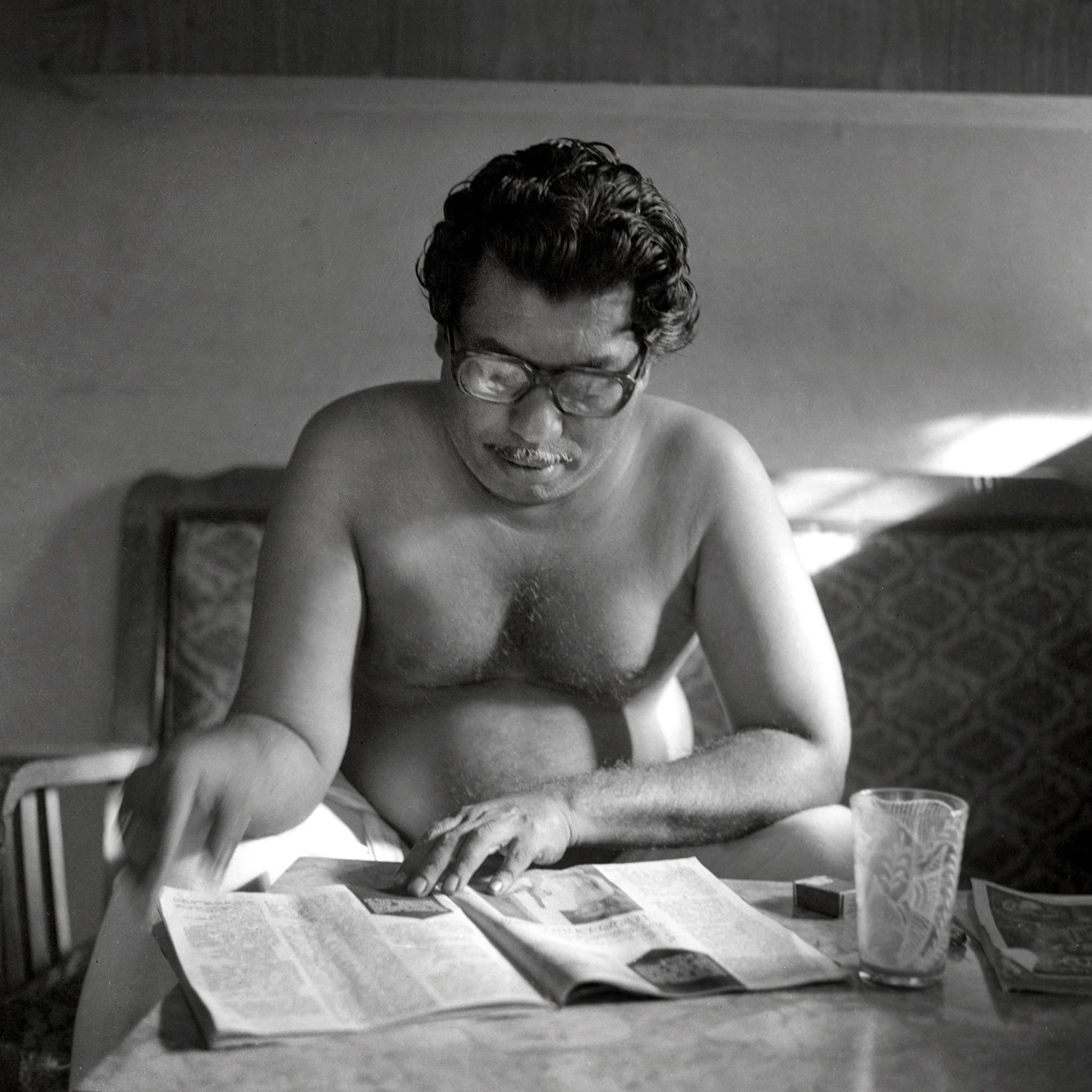Panorama
Digital Moon
and
Analogue
Nights
Photo Mail presents
A panoramic view of
The art of photography’s
Interaction and
Interrelation with other
Art mediums such as literature
Architecture, and
Other visual media
In this autobiographical
memoir Abul Kalam Azad
discusses his versatile journey
as a photo-artist, drawing
parallels to the socio-political
context, personal history
and art. The acclaimed
pieces were originally
published in the popular
Malayalam journal
Deshabhimani for
over a year (2019 – 2020)
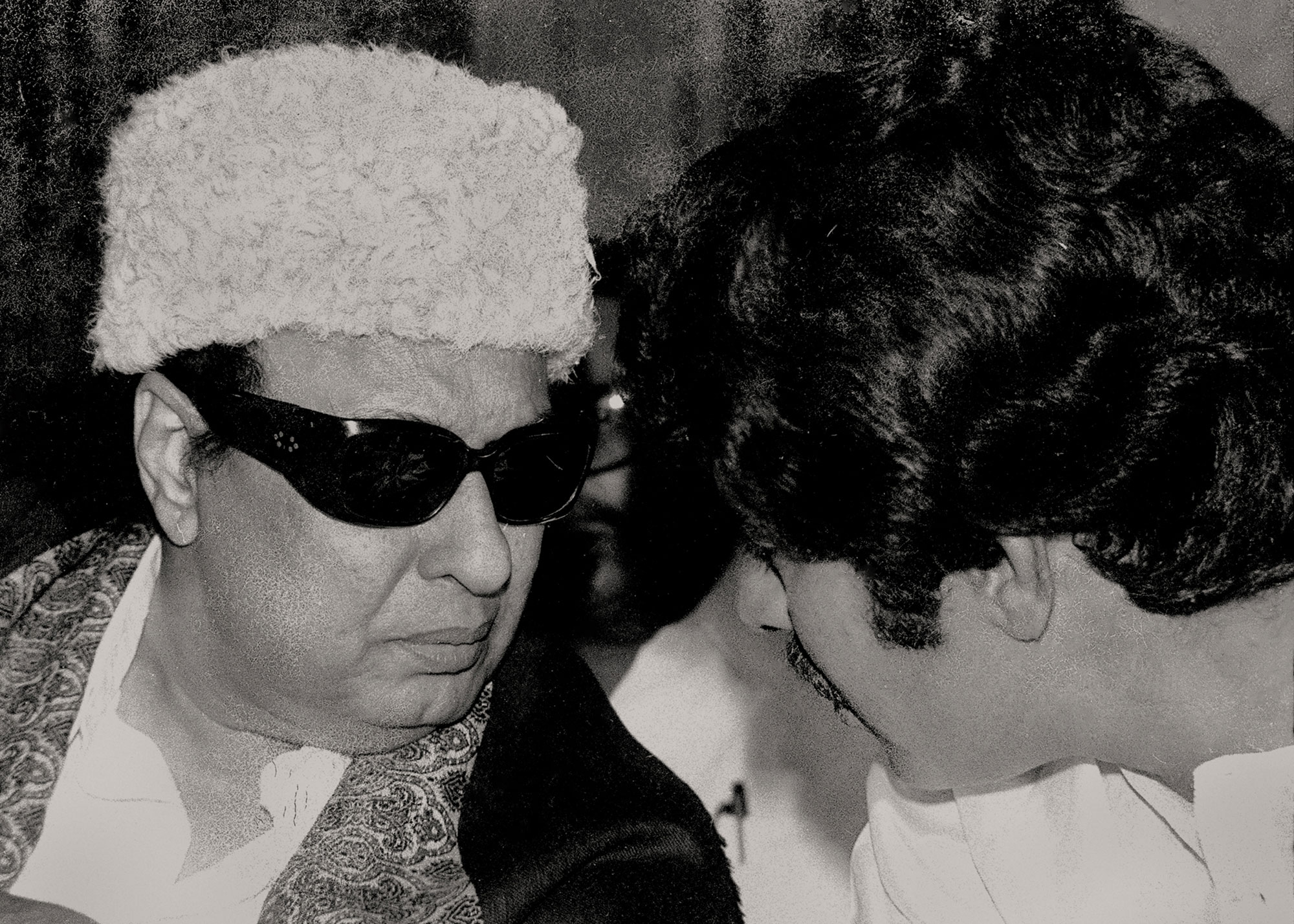
MGR and Mamootty © Abul Kalam Azad 1980s
Long before Mammootty perched on top of the Malayalam film industry or even before he launched his career in law, he made headlines for a quite unconventional and completely surprising reason: he streaked in the streets of Ernakulam with two college buddies! This was how the people of Kochi first came to know of him and they always remembered the rebellious young man who, following a bet, ran naked publicly from the law college with two friends, though one quit midway. The news story and photograph of the two streaking men was carried by the town’s newspapers, though nobody back then could ever predict this man was going to be the Malayalam film industry’s biggest star ever.
After his marriage to Sulfat, the niece of my friend, Mammootty became a friendly local in our neighborhood. He was seen hanging out in his luna moped and frequenting juice shops, market and the mosque during Friday prayers. Some of his friends’ brothers were my friends. By then, he had started practicing as a lawyer but was keen on acting, and had already done a few minor roles in movies and dramas. He also acted in Aradhana, a drama written by NK Latheef and produced by an amateur club associated with Maulana Abul Kalam Azad Socio-cultural Center in Kochi. I was too young to remember the premiere of Aradhana. But I do remember the second performance at Vallarpaadam, a nearby island. The writer NK Latheef was a friend of my father, and many of my relatives played a role. Every night, the rehearsal would be held at the terrace of my house; OS Hameed directed the play. Besides Mammootty, my kochappa (uncle) Ismail, NKA Shareef, Hamsundar, Adv. Mansoor and many others acted in it. I used to attend the rehearsals, and as their enthusiastic in-house photographer, I eventually became a privileged crew member. We went in a boat to Vallarpadam and the overnight performance was a hit: quite an experience to cherish in memory. Soon after the performance, Mammootty started acting in films and became quite popular.
It was around this time that the silver jubilee celebrations of the Cochin Thuraimuga Thozhilali Union (CTTU) took place. The chief guest was none other than the great MGR alias MG Ramachandran, the then Chief Minister of Tamil Nadu. When the programme began, Mammootty’s father-in-law, one of the office-bearers of CTTU, invited him to the stage and seated next to MGR. And thus, this photograph!
From the erstwhile Madras, on the inauguration day, MGR arrived at the Cochin old airport, and I was there to shoot him. As a big fan of MGR, obviously one among the millions of MGR lovers, I cherished my fascination to meet and shoot him. A master performer who excelled in playing fashionable, romantic, globetrotting and adorable heroes, MGR was unique by all standards. As most of the journalists and photographers took images of his arrival and left, I decided to stick around.
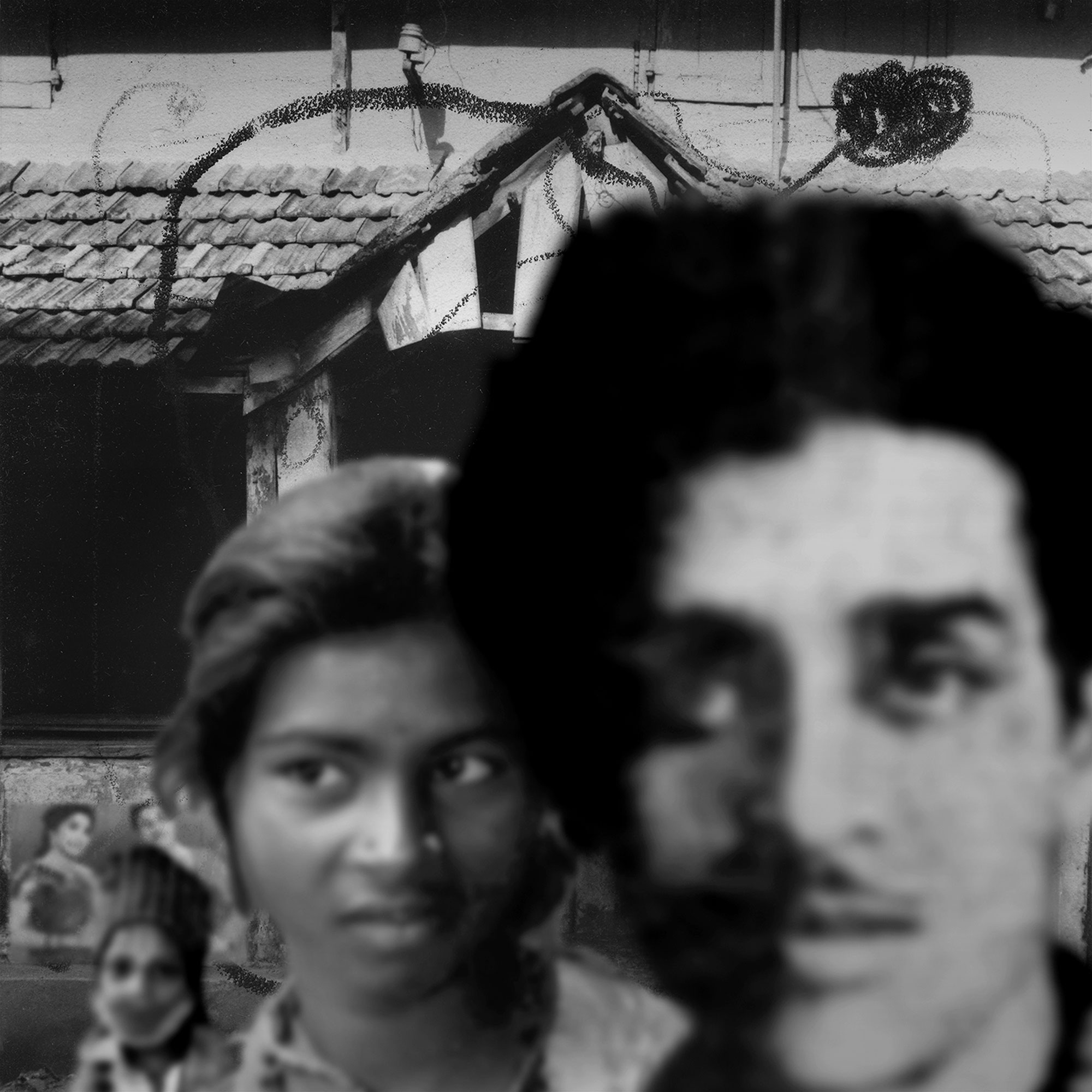
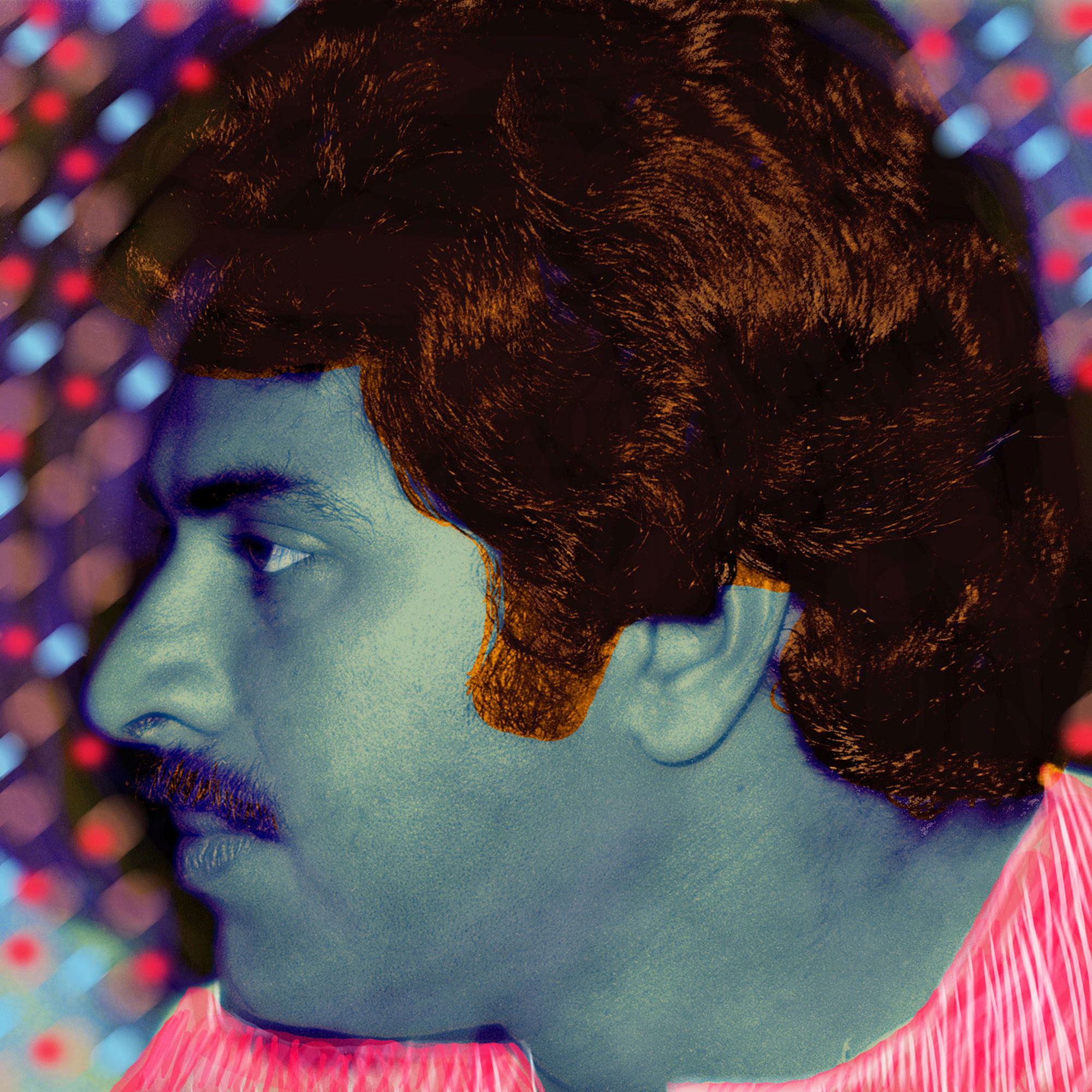
Image 1 Mehaboob Bhai from the Untouchables Series, 2005 – 2010; Image 2 Mammootty | Digitally reworked analogue photographs © Abul Kalam Azad 1984 – 2010
I joined the organizers to the guesthouse where MGR stayed: Wellington Island. Although my Tamil was not very commendable back then, I happened to be the only one around who could communicate in Tamil. What else a fan would need? He started asking several questions in his husky voice. I found him a soft, attentive man. After a few hours of acquaintance, I politely and ambitiously asked him whether he could remove his white fur cap and sunglasses. These iconic symbols dominated most of his political pictures. My dream was to photograph the artist in him. He laughed. And, after a brief pause, he said, “Come to Chennai”.
But, that never happened. And, MGR died in 1987. There were several journalists during the CTTU celebrations, but so far, I haven’t come across any image of Mammootty with MGR. Those times, there was no system of archiving news photos. Usually, after the day’s story, the films were thrown away or kept aside without much care. In that sense, this photograph of MGR with Mammootty is a rare find, as this probably was their first and last meeting.
Interestingly, this was the last time I met Mammootty, too. My journey had taken me elsewhere, and even after returning to Mattancherry, I never tried to re-establish the connection. Mammootty eventually settled in Kochi, a popular hub for the big names of Malayalam cine industry today. Curiously, the cine history of Kochi has had interesting twists and turns, which is worth a study. In fact, historically, it was the path paved by the pioneers such as TK Pareekutty, Babu Sait, H Mehboob and KJ Yesudas that made Kochi the cultural hub it today is.
As Kochi islands are a small settlement, those who were into creative and cultural inclinations, were naturally known to one another. Knowing and being known to every other person in the town is not a status quo, but part of everyday life. Born and brought up in Fort Kochi, TK Pareekutty started Chandrathara productions and produced about nine films. He is most remembered for Neelakuyil, which received prestigious national awards in 1954. Although I never met TK Pareekutty, I had seen the trajectories of Babu Sait and Mehboob taking a pathetic downward swing, in terms of material resources and worldly benefits. Towards the end of their lives, despite the fame and resources they once had, these legends struggled miserably.
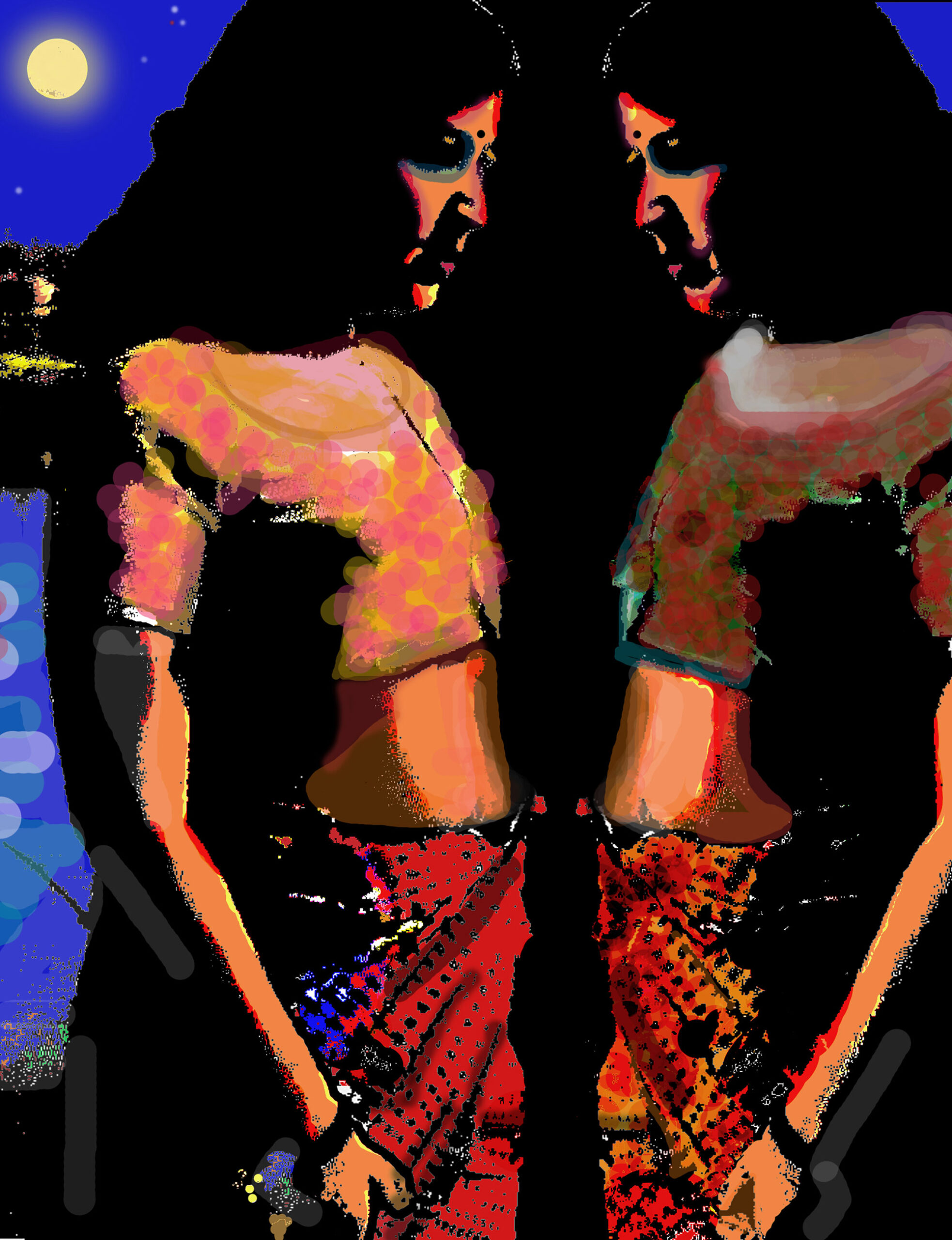
Karuthamma (Heroine of Chemmeen cinema) | Untouchables Series | Digitally reworked analogue photographs © Abul Kalam Azad 2005 – 2010
Babu Ismail Sait, who had also hailed from Kochi, was best known as the producer of Chemmeen, which received the President’s gold medal, the first gold award in South Indian cinema. And, he still holds the record as the youngest cine persona to receive one. My Kochappa and friends were in a scene or two in his movie Ashthi. I had joined them during this shoot, and I still remember Babu Sait’s confident stride and his fancy Mercedes. But, sadly, his every fortune was gone by the time I met him the last. He had sold his cinema (Kavitha), luxurious house and even the fancy car. Living with his brother, he felt terribly lonely and depressed. He used to visit my studio in Mattancherry and would regret over what could have been.
Mehboob Bhai, the lovable bard of Mattancherry is still as popular as he was in the 1950s. Sadly, my first encounter with him was not very pleasant. On one Eid evening, he stopped my father on our way to the market and demanded money. He took the money from my dad, but then started yelling. It appeared that he was not happy with the amount. To my surprise, my father kept quiet and didn’t react to the curses. When I asked him, he replied: “that’s our Mehboob. Don’t worry; he will be fine the next time”. I could not believe that this was the man behind the melodious voice, as he was wearing dirty clothes and looking quite shabby. However, later, I had the privilege of enjoying his mehfils and cherishing several fond memories. He would perform for his friends and admirers, anywhere and everywhere – in streets, marriages, bars, political conferences, trade union gatherings etc. If you offer him money, he would sing a special song for you; it’s a personal mehfil – an exclusive performance as he would be singing this in your ears. In his last years, for a short period, he was working in a local mosque and would rhythmically offer Azaan (Islamic call for prayer).
My family had a long association with Yesudas too. Contradictory to the bohemian lifestyle of Mehboob, Yesudas took a professional, systematic and materialistic approach to music and life. Those years, the cine world was centered in Chennai, though now it is shifting to Kochi. But, it seems, replication and imitation of the 50s style cloud the market. There is no one to claim and protect the creations of the 50s maestros; copyrights is another critical subject to be discussed.
For one reason or another, I could never click a photograph of Babu Sait and Mehboob Bhai. I feel this as a layer of absence. In my digitally altered photo series titled ‘Untouchables’ (2005), I attempted to symbolically represent their lingering presence in my personal memory as well as the collective history of our region. In a way, this photographic series attempted to unshackle photography from the domains of documentation and journalism. These are the purviews within which this dynamic medium is so often chained and restricted.
Here, we have a different set of images and imagination – one image was shot during an actual event and the other was manipulated. Photographs are expected to propagate reality. It must inform, describe and illustrate the news or story. But, photographs have never been a tool to depict reality. A photographer always decides what to include and edits out the rest. Photograph only gives a partial view of a fleeting moment. It is more so in the digital era. In fact, after the advent of photoshop, the role of photographs as evidence has been negated even by courts. It is now quite easy to fabricate evidence by fusing together isolated places, people, and events. It is no longer difficult to have a photograph of MGR with Che Guera or Che Guera with Charlie Chaplin. One’s imagination is the limit. This changed the perception of photographs as a mere technique, which can be mechanically replicated and reproduced. Through imagination, photography becomes a tool for thought and self-expression. On the other hand, however, this quality could take photography unto the realm of art, too.
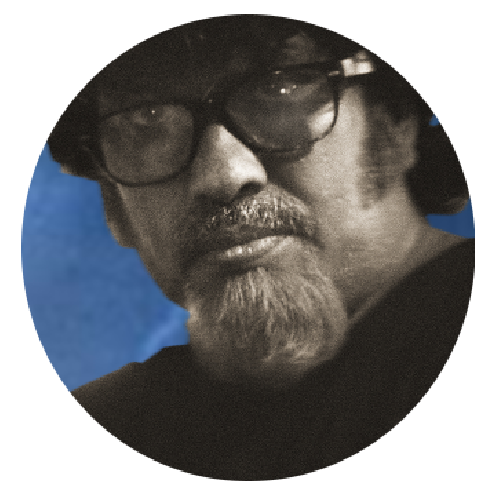
Abul Kalam Azad is an established contemporary Indian photographer, noted for his maverick experimental and conceptual works. He is the Founder Chairman of Ekalokam Trust for Photography. Abul’s photographic works are predominantly autobiographical and explore the areas of politics, culture, contemporary micro-history, gender, and eroticism. His works attempt a re-reading of contemporary Indian history – the history in which ordinary people are absent and mainly provided by beautiful images and icons. To see more works of Abul Kalam Azad check his website.
Published on November 8, 2021
Share
Related Articles

The Meeting of Two Legends – MGR and Mammootty
From the erstwhile Madras, on the inauguration day, MGR arrived at the Cochin old airport, and I was there to shoot him. As a big fan of MGR, obviously one among the millions of MGR lovers, I cherished my fascination to meet and shoot him. A master performer who excelled in playing fashionable, romantic, globetrotting and adorable heroes, MGR was unique by all standards. As most of the journalists and photographers took images of his arrival and left, I decided to stick around.
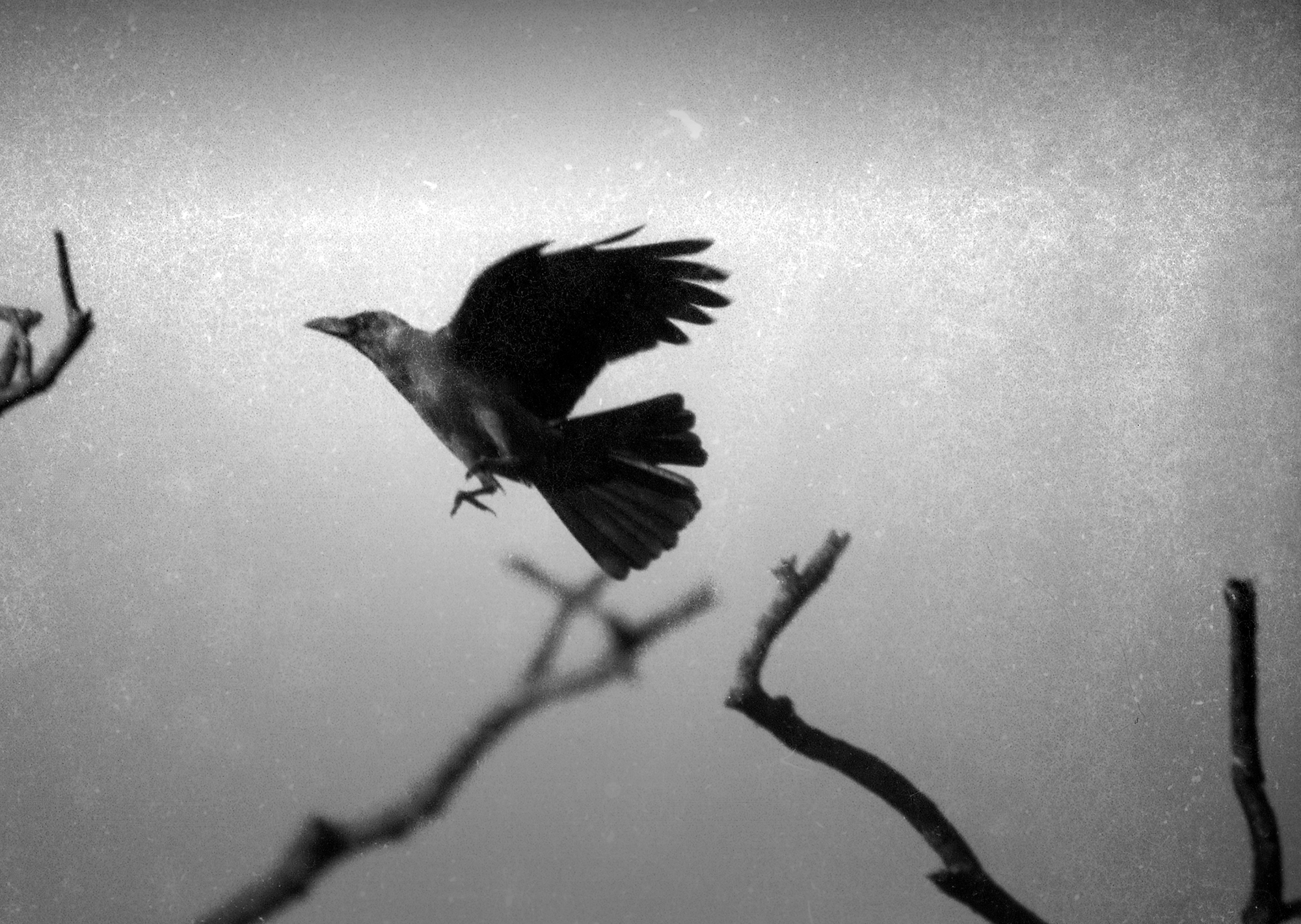
Crows: Photographing the Familiar | Abul Kalam Azad
Photographs can make familiar objects, places, and people more familiar. Everyday mundane encounters and banal objects, when photographed, instill an interest in its viewer to observe the ignored. For, when we look at familiar objects, again and again, it reveals something or the other that was not seen during the first instance.
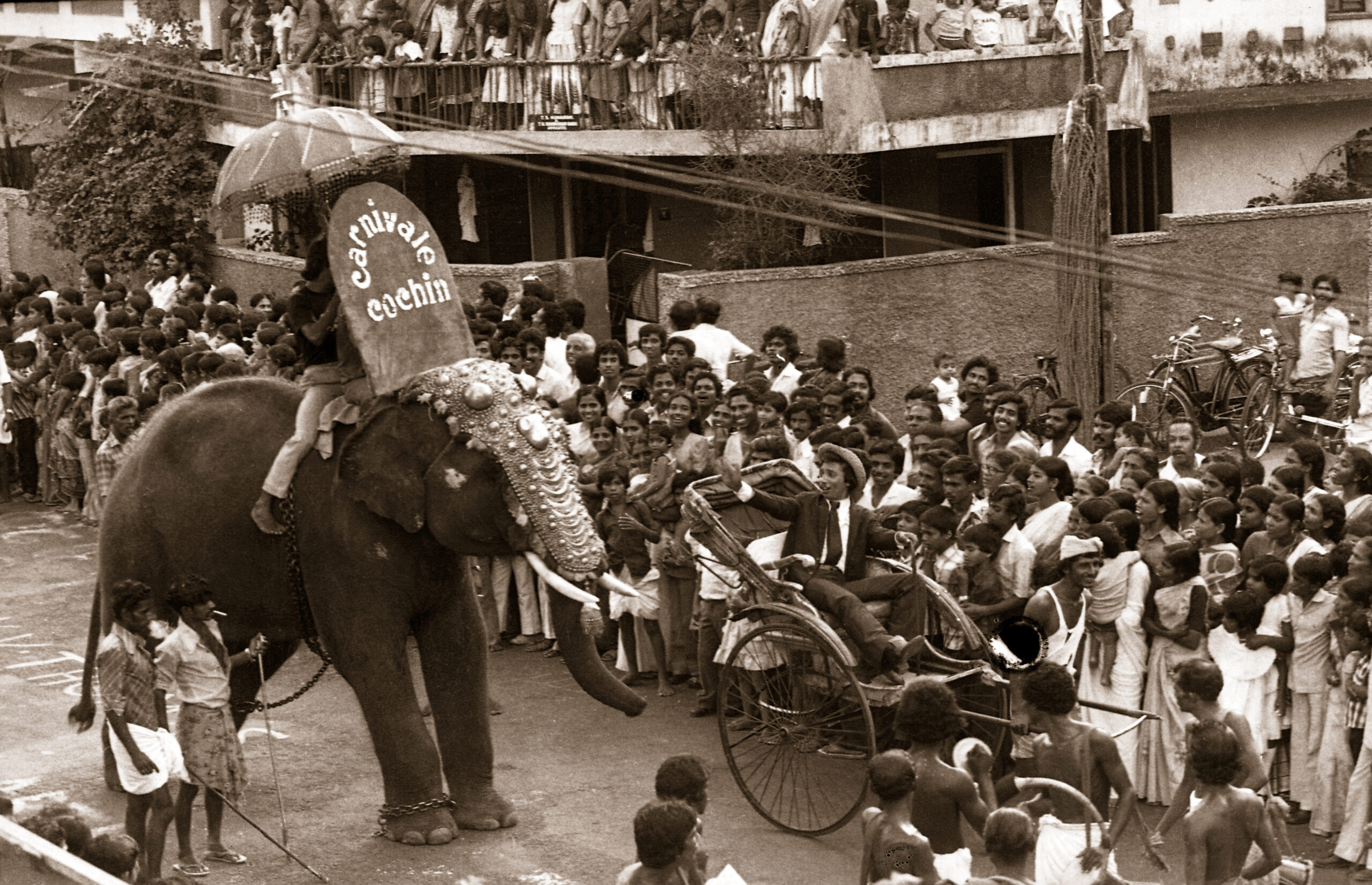
Huge and Historic: On the First Cochin Carnival
After my father’s demise, I stumbled upon a few negatives he had preserved along with some valuable documents. It was amidst this, I found a few strips of the negatives of the Carnival Parade 1985 (The First Cochin Carnival), the culminating event of the year-long Beach Festival (1984-85). The origin of the Cochin Carnival is a lot more straightforward than what is being popularly narrated today. It began as a celebration of the UN Declaration of 1985 as the International Youth Year. Such a remarkable cultural event was made possible in Kochi thanks to its rich cosmopolitan history.
Microhistories of Unsung Heroes
Of all the artists I met at Kalapeedam, Chicku was closest to me, as there were many things common between us. Chicku was also a drop-out, self-taught, and nomadic. By nature, he was timid and tranquil. Most of his works were surrealistic animal and plant forms. For his study, we spent several days trekking and exploring the forests and mountainous regions of South India. A wonderful painter with unmatchable skill and capability, Chicku brought out his artistic expression with a lot of rebellion and originality.
Hitchhiking Days
Most of the Indian photographers learned from their foreign masters and hence, their styles continued to dominate Indian photography. They were either voyeuristic visual trophies that professed, “I had been there, seen that, met him”, or a tool that propagated “top-down let’s-look-at-the-suffering” sort of charity or propaganda of the photographer/client.
Mattancherry: My Cosmopolitan Hometown
Mattancherry has been a microcosm of authentic cosmopolitanism, many ethnicities and faiths coexisting together, with its beautiful contrasts and combinations. I grew up there, in one of its small boroughs called Kochangadi. This Muslim dominated waterfront settlement had – and still has – a few Jewish, Ezhava and Christian families. Apart from a synagogue and a few churches, there are several small and big mosques that belong to different ethnic groups or factions of Muslims.
Sepia Tinted Memory
Our family name is Pattanam, an acronym for the Tamil word Patthanathukarar (which means ‘hailing from a port town’). We could have been from one of the earliest seaports of Tamilakam (the region corresponding to the present South India) such as Kaveripoompatanam (Chola Port Pukar) or Kayalpattanam (Pandyan Port Korkai). Trading took my forefathers to different parts of Tamilakam and they eventually settled in Mattancherry.




